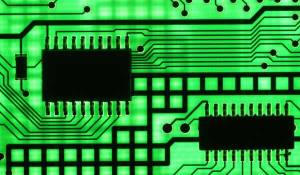MOLECULAR COMPUTERS – WHEN WILL WE GET THERE?
In previous posts I have talked about the absolute requirement of a computer system that can be totally relied upon to control a star mission. I have postulated that we need to advance from our current highly technical – but sometimes unreliable – systems to a level of reliability and logic that can only be realised by true artificial intelligence [AI].
We are probably at least 50 years from this level of AI and certainly 100 years before our AI network designs and constructs a Mars base. This would be the nerve centre to build a starship in Mars orbit for a voyage to the stars in the middle of the 22nd century.
But how far can we advance computer capability in the next 100 years and can we ever realise the ultimate design – a true molecular computer!
Current capability manufactures integrated circuits [microchips] on up to 450 mm diameter wafers of silicon at wire dimensions of 20-40 nanometres. Typically 1416 microchips each 10 mm square are fabricated on each wafer simultaneously to tolerances that are astoundingly minute. There are billions of transistors and other electronic components on each chip which is the size of a fingernail. A fabrication plant costs $5 billion and is built to resist earthquakes as NO vibration can be tolerated throughout the process.
All this process sophistication is aimed at cramming incredible numbers of micro-transistors into smaller and smaller spaces producing 5 terabyte hard drives and 8 gigabytes RAM memory chips. Basically each byte is a single memory slot which is a switch [in simple terms] that can either be ‘off’ for 0 or ‘on’ for 1. This is the basis of the digital age where all information can be expressed in binary code in 0’s or 1’s, stored and processed in our computers and wirelessly transmitted around the world via Internet and telephonic communications. For example the number 3245 is represented in binary code as 110010101101 which would occupy 12 bytes of memory set to on-on off-off-on-off-on-off-on-on-off-on. All our data can be stored and processed in this form but we need an awful lot of memory slots to do this.
Future computer development will pack increasingly more bytes into our chips but we will reach a physical constraint – there is a practical limit to how small we can make the circuits on the silicon wafers. The printing and etching processes will have reached their capability.
So where next for the computers of the mid and late 21st century?
Scientists at IBM have created an alternative to silicon for the logic gates on microchips that will ensure the continuing shrinkage of the basic digital switching mechanism for at least 10 more years. The IBM breakthrough, first reported in Nature Nanotechnology and by the New York Times, uses carbon nanotubes, a type of molecule that is an alternative to silicon, for the creation of miniature logic gates in microprocessors.
Now watch what IBM can do with individual carbon monoxide molecules at the molecular level!
Further, a group of future-minded researchers are expressing optimism about the potential of tiny nanoelectronic components, organic molecules, carbon nanotubes and individual electrons that could serve as the underlying technology for new generations of microprocessors in the future.
This is the direction of the ultimate molecular computer but we are a long way from this yet. However we will certainly need this technology to develop AI computers to build and control our star missions of the future.
MOLECULAR COMPUTERS – WHEN WILL WE GET THERE?
We must be 10 – 20 years away, but what do you think?
And what if something technologically evolved over hundreds of millions of years and became the ultimate molecular entity? How sophisticated could that be? I have imagined that, but you will have to follow the link below to find out more and learn The Quest of the Dicepterons.
IMAGINE LIFE ELSEWHERE?
IMAGINE THE UNIMAGINABLE!



